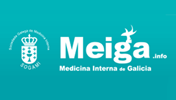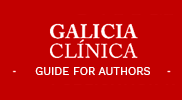Abstract
Objetivo: Análisis de coste-efectividad de las alternativas terapéuticas recogidas en el protocolo de la Comisión Autonómica Central de Farmacia y Terapéutica para el tratamiento de la Artritis Reumatoide.
Material y métodos: Estudio observacional descriptivo transversal (Abril 2012) de los pacientes a tratamiento con los siguientes medicamentos biológicos: infliximab, abatacept, tocilizumab, rituximab, etanercept, adalimumab, certolizumab y golimumab.
Se registró: medicamento actual y pauta, tratamiento previo con metotrexato y coste anual del tratamiento. Se elabora una comparativa con la hipótesis de cambio de tratamiento, en el caso de los pacientes con medicamentos de administración intrahospitalaria, a los medicamentos de dispensación a pacientes externos incluidos en el protocolo.
Resulados: :558 pacientes; 229 a tratamiento con infliximab: 30 (13,1%) con dosis de 3mg/kg, 173 (75,5%) con 5mg/kg y 26 (11,4%) con 7mg/kg; 27 con abatacept: 5 (18,5%) con dosis de 500 mg, 19 (70,4%) con 750 mg y 3 (11,1%) con 1000 mg; 12 con tocilizumab: 100% con 8mg/kg; 66 con rituximab 1000 mg; 14 con golimumab 50mg; 5 con certolizumab 200mg; 116 con etanercept 50 mg y 101 con adalimumab 40mg. Un 95,78% (546) habían recibido metotrexato previamente. El coste medio anual se calculó
por paciente considerando peso superior a 70 kg y compartiendo viales en el caso de los medicamentos que se preparan en cabina de flujo laminar: infliximab 14.665€, abatacept 14.695€, tocilizumab 14.140€, rituximab 2400€/dosis, etanercept 11.879€, adalimumab 12.895€, certolizumab 11.888€ y golimumab 10.316€/año.
Siguiendo la hipótesis de cambio de tratamientos administrados en Hospital de Día a tratamientos de dispensación ambulatoria los ahorros estimados estarían comprendidos entre 1245 y 4379 €/paciente.
Conclusiones: A la espera de algún estudio que demuestre superioridad de alguno de estos medicamentos frente a otro en eficacia y seguridad, debería hacerse una adecuada selección del medicamento que permita ahorrar recursos tanto en gasto farmacéutico como de personal. Es importante considerar determinados factores como la frecuencia de administración, posibilidad de alargamiento del intervalo de administración, determinaciones de anticuerpos frente a los fármacos y valoraciones diagnosticas para mejorar la eficacia/eficiencia de los tratamientos, para así evitar un posible “agotamiento terapéutico”.
Objective: Cost-effectiveness of alternative therapies included in the Central Autonomous Committee Pharmacy and Therapeutics protocol for Rheumatoid Arthritis treatment.
Material and methods: Descriptive study (April 2012) of patients following treatment with biologics: infliximab, abatacept, tocilizumab, rituximab, etanercept, adalimumab, certolizumab and golimumab.
Joined: current medication regimen, previous methotrexate treatment and annual treatment cost. The comparison is made assuming changes in treatment, from hospital-administered drugs to medications dispensed to outpatients included in the protocol.
Results: 558 patients, 229 treated with infliximab: 30 (13.1%) at a dose of 3mg/kg, 173 (75.5%) with 5mg/kg and 26 (11.4%) with 7mg/kg; 27 with abatacept : 5 (18.5%) with doses of 500 mg 19 (70.4%) with 750 mg and 3 (11.1%) at 1000 mg; 12 tocilizumab: 100% 8mg/kg; 66 with rituximab 1000 mg, 14 50mg golimumab, certolizumab 200mg 5; 116 with etanercept 50 mg and 101 with adalimumab 40mg. A 95.78% (546) had previously received methotrexate. The average annual cost was calculated considering patient weighing more than 70 kg and sharing vials in the case of drugs that are prepared under aseptic conditions: € 14,665 infliximab, abatacept € 14,695, € 14,140 tocilizumab, rituximab € 2,400 / dose, € 11,879 etanercept, adalimumab 12,895 €, certolizumab and golimumab € 11,888 € 10,316 / year.
Following the hypothesis of change in treatments from day hospital administered to outpatient dispensing, estimated savings would achive between 1245 and € 4,379 / patient.
Conclusions: As there is no study showing superiority of any of these drugs against the others in efficacy and safety, there should be a proper medicine selection that would ensure saving both material and personnel resources. It is important to consider certain factors such as administration frequency, possibility of lengthening the dosing interval, determinations of antibodies to drugs and diagnostic evaluations to improve the effectiveness / efficiency rate of treatments,in order to avoid a possible "therapeutic exhaustion ".
© 2012 Galicia Clínica.
Complete article | Pdf article


